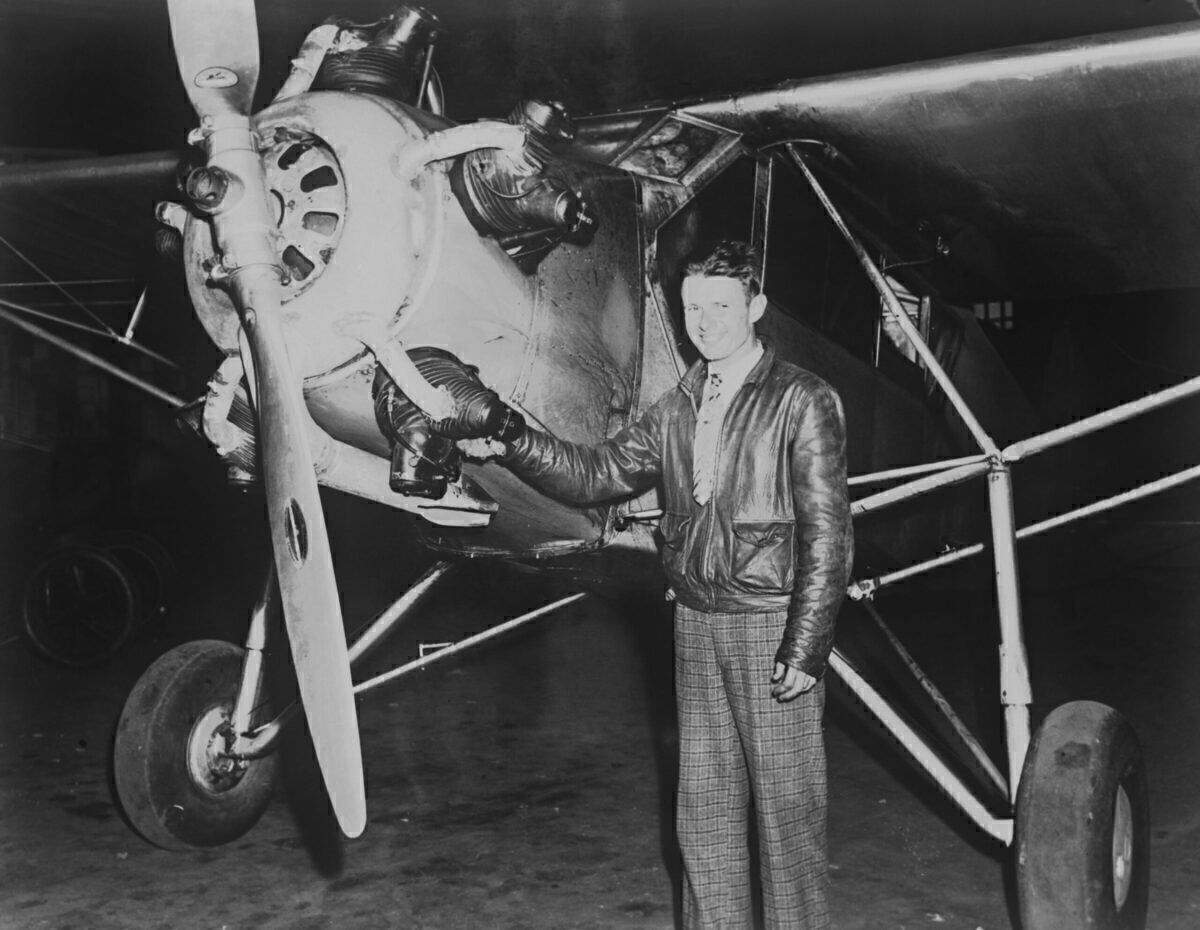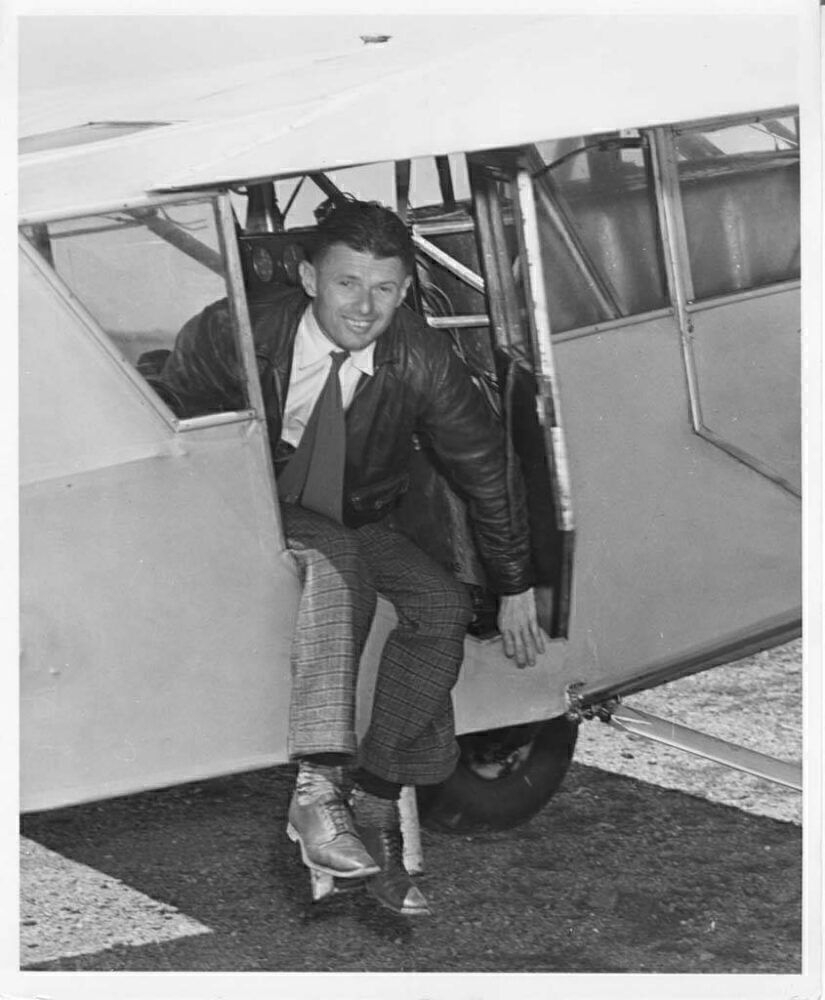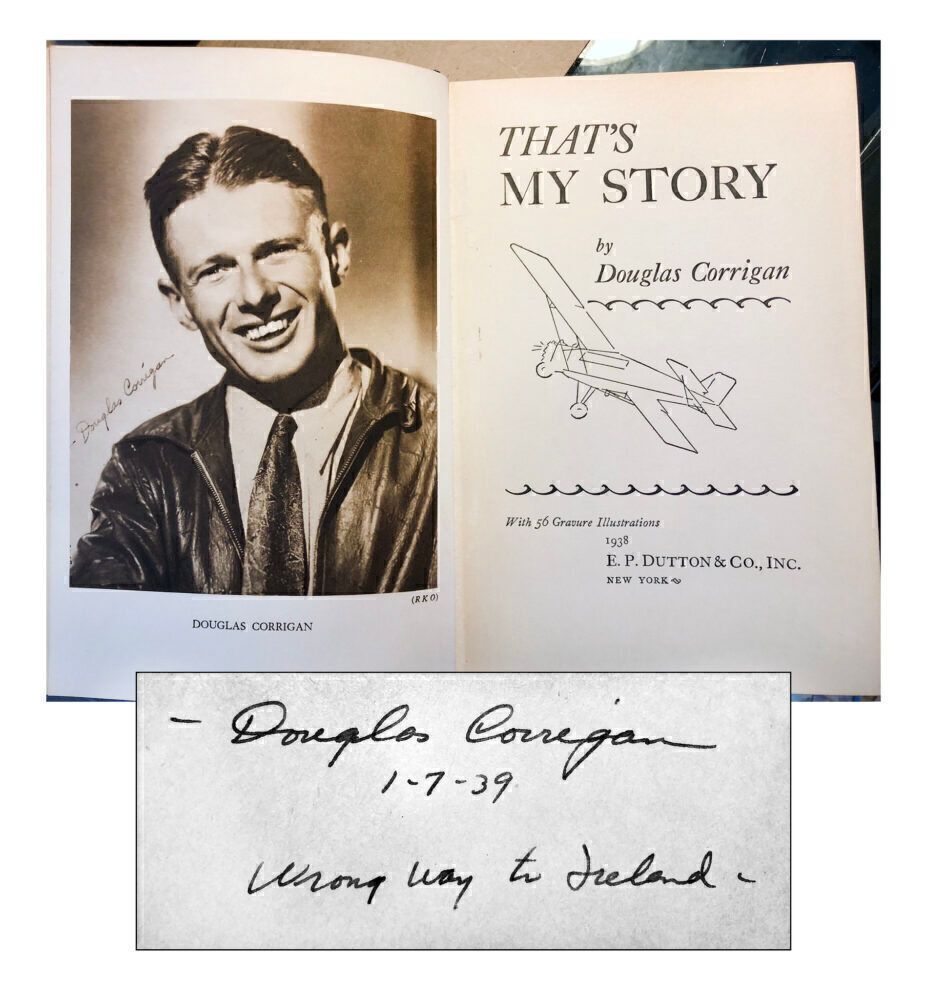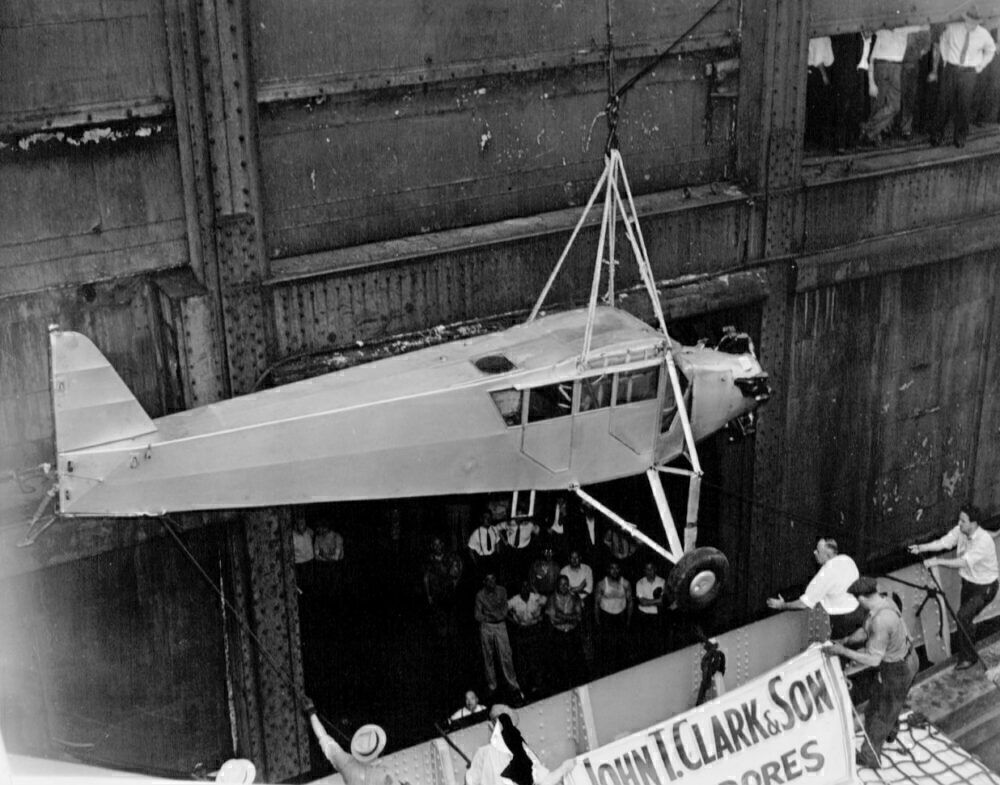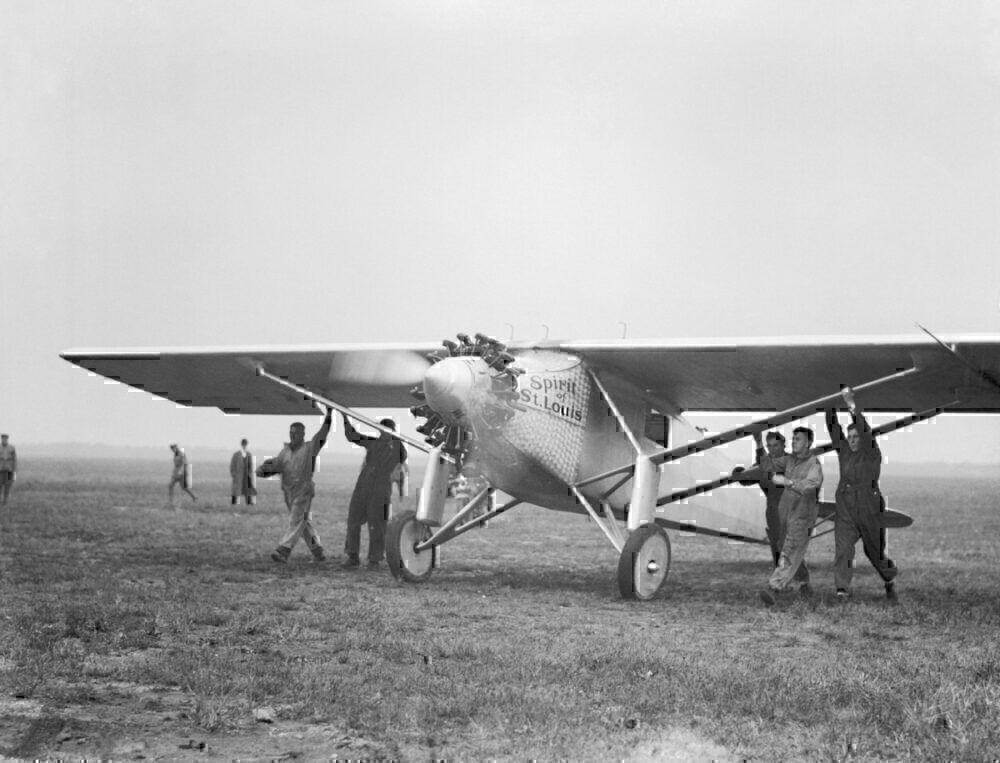In the summer of 1938, Douglas Corrigan had landed in Dublin Ireland after a 28-hour flight from New York. Despite the grand achievement in the early days of solo transoceanic aviation, the pilot claims that he wasn’t supposed to travel to Europe. He actually filed to fly to Long Beach, California! How did this happen? Let’s take a look.
How it all started
The future aviator was born in Galveston, Texas, on January 22nd, 1907. He started his working life in construction, but this would soon change on a Sunday in October 1925. He paid a visit to a local airfield and watched a pilot take passengers for rides in a Curtiss "Jenny" biplane.
The young man then returned the next weekend with $2.50 to request the pilot to take him for a ride in the air. Soon enough, they flew over Los Angeles, and Corrigan’s fate was sealed. Just a week later, he started his first flying lessons at the same field and even took an interest in aviation mechanics. Subsequently, in the following spring, he was ready to fly solo.
During this period, Corrigan got a job working with B.P. Mahoney and T.C. Ryan, who were respected manufacturers in the industry. While working at their San Diego factory, the one and only Charles Lindbergh wanted the team to design and build the famous Spirit of St. Louis. Notably, Corrigan assembled the plane’s wing, and he even fitted its gas tanks and instrument panel. This aircraft would go on to make a historic transatlantic flight in May 1927, inspiring Corrigan to set his eyes on similar exploits in the future.
Earning his stripes
In the fall of 1929, Corrigan became a full-fledged pilot after earning a transport pilot's license. Then, in 1919 he packed his bags to live on the East Coast and launched a small passenger service with an accomplice named Steve Reich. The pair ventured to small towns and sold plane rides to locals. Bearing in mind, this was a pioneering period in aviation, so it would have been a real treat to hop on an aircraft.
Despite some decent successes with the business, Corrigan headed back to California in 1933 with a used Curtiss Robin OX-5 monoplane. While continuing on as a mechanic, he modified this aircraft to be primed for transatlantic operations.
Stay informed: Sign up for our daily and weekly aviation news digests.
Heading back east
At the age of 31, Corrigan flew out to New York City from Long Beach. The pilot filed to return back to Southern California on July 17th, 1938, but during that foggy morning, he headed east from the 4,200-foot (1,300 m) runway of Floyd Bennett Field, flew into the mist, and vanished for over 28 hours. Nonetheless, he eventually appeared in Dublin, all the way across the Atlantic Ocean.
When explaining the situation to officials, Corrigan said that he left New York en route to California but had then gotten mixed up in the clouds and haze. He also shared that he had an issue with his compass. Overall, the airman expressed that he noticed the error after flying for approximately 26 hours. However, there is good reason to believe that this transatlantic hop wasn’t actually a mistake.
A look back
Importantly, Corrigan, a man of Irish descent, in 1935, applied to the federal government for permission to make a direct trip from New York to Ireland, which was turned down. Officials felt that the aircraft was not in the right shape to make this transatlantic hop. He then made several modifications and additions over the next few years but was continuously denied. Despite not being approved for transatlantic flight, the government did certify the plane for cross-country trips.
Moreover, the U.S Centennial of Flight Commission highlights that Corrigan grew frustrated with the bureaucracy by 1937 and flew to New York late at night after authorities had gone home. He would then have filled his tanks and set flight for Ireland. Unfortunately, there were several mechanical issues while heading to the East Coast and he lost his window of safe flying weather. Therefore, he decided to fly back west.
A great feat
Whether intentional or not, this flight over the Atlantic should not be understated. Corrigan became a pioneer with this journey and returned home as a hero as his achievement was truly valued. Lindbergh was the first pilot to solo a nonstop transatlantic flight, doing so with a strong financial backing and a specially developed aircraft. Yet, in comparison, Corrigan had a nine-year-old Curtiss Robin, which wasn’t certified and even had a gasoline leak just ahead of the feat.
The media loved the moment. For instance, the New York Post printed a front-page headline stating "Hail to Wrong Way Corrigan!," backward. Nonetheless, Corrigan didn’t mind the jokes as he was now a superstar and even received a Broadway ticker-tape parade with over a million people attending.
What's the verdict?
The dust soon settled and Corrigan would go on to live a humble life. He would pass away at the age of 88 on December 9th, 1995.
“Corrigan lived a fairly simple life after his famous flight. In the 1950s, he bought an orange grove in Santa Ana, California, and lived there for the remainder of his life. During the 50th anniversary of his flight, some newspapers began reporting that he was going to admit to having flown to Ireland intentionally, but he never publicly acknowledged that fact. Corrigan died on December 9, 1995,” the U.S Centennial of Flight Commission shares.
“Although Corrigan never admitted that his story was a ruse, most people believe that he purposely set out to bypass authorities and accomplish his dream of a transatlantic flight. Despite the humor that his story has provided, it is worth noting that Corrigan flew across the Atlantic during the early years of transoceanic flights, something that only the bravest and best aviators of the day attempted. Corrigan deserves recognition for such a daring achievement, even though he had to accomplish the task in such an unorthodox manner.”
When officials pressed Corrigan for answers, he replied by saying "that's my story,” which became the title of his book. Regardless of the reasoning, his only penalty was a short suspension of his pilot’s license, which was granted back the day he returned to New York by ship, on August 4th, 1938.
What are your thoughts about Douglas Corrigan and his ventures? Do you feel that the trip to Ireland was a mistake or was it a ruse? Let us know what you think of the story in the comment section.

